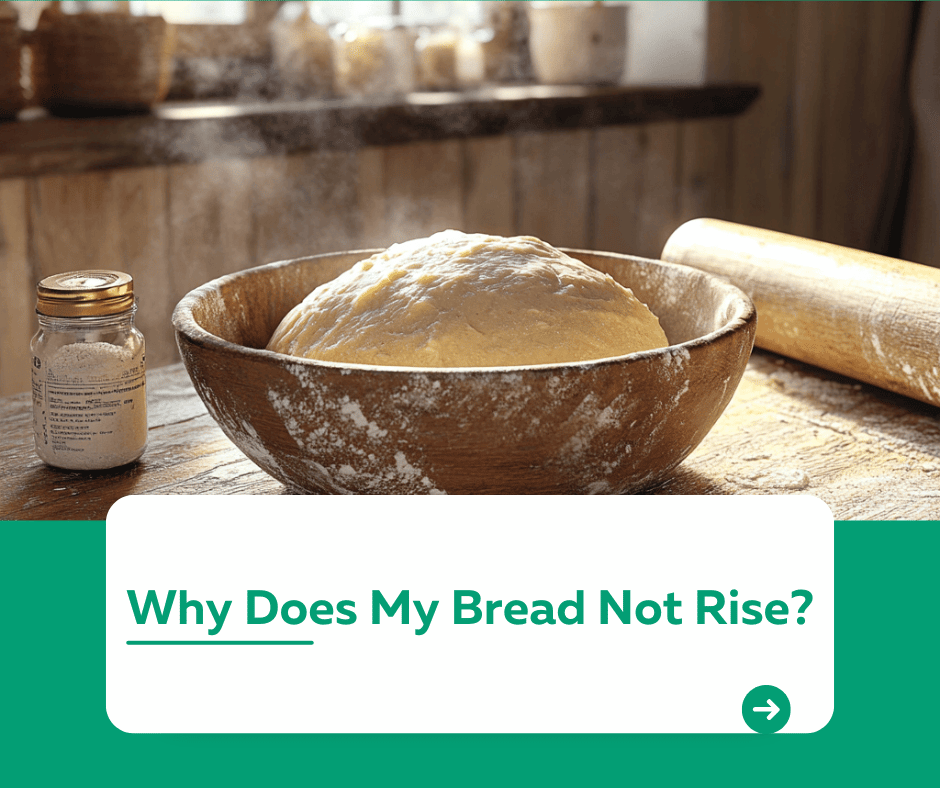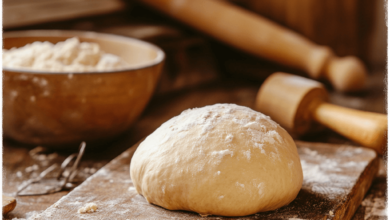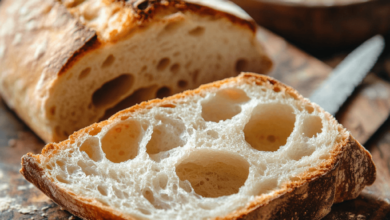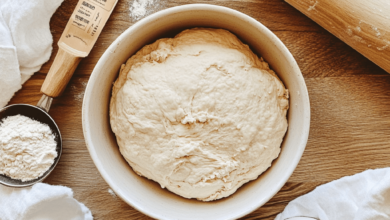Why Does
Why Does My Bread Not Rise?

Introduction
One of the most common frustrations for bakers is dough that refuses to rise. Why does bread sometimes fail to rise, and how can you fix it? Understanding the science behind yeast and dough can help you avoid this issue and bake perfect bread every time.
1. Common Reasons Your Bread Isn’t Rising
1.1 Expired or Inactive Yeast
- Why It Happens: Yeast is a living organism, and if it’s expired or stored improperly, it loses its ability to ferment and create gas.
- How to Fix: Always check the expiration date on your yeast. Test it by dissolving in warm water with a pinch of sugar; if it doesn’t foam after 10 minutes, it’s inactive.
1.2 Incorrect Water Temperature
- Why It Happens: Water that’s too hot kills the yeast, while water that’s too cold slows down its activity.
- How to Fix: Use water that’s between 95°F and 115°F (35°C–46°C) for optimal yeast activation.
1.3 Insufficient Kneading
- Why It Happens: Kneading develops the gluten structure that traps gas bubbles, helping the bread rise. Without enough kneading, the dough lacks elasticity.
- How to Fix: Knead the dough until it’s smooth, elastic, and passes the “windowpane test.”
1.4 Improper Proofing Environment
- Why It Happens: Yeast needs warmth and moisture to ferment. A cold or drafty environment slows the process.
- How to Fix: Proof your dough in a warm, draft-free spot, like inside an oven with the light on or near a bowl of warm water.
1.5 Too Much Salt or Sugar
- Why It Happens: Salt and sugar can inhibit yeast activity when used in excess.
- How to Fix: Stick to the recipe’s measurements, ensuring the yeast isn’t in direct contact with salt.
1.6 Overproofing or Underproofing
- Why It Happens: Overproofed dough collapses, while underproofed dough hasn’t developed enough gas to rise.
- How to Fix: Monitor proofing time and use the “poke test” to check readiness.
2. How to Encourage Dough to Rise
2.1 Use Fresh Ingredients
- Always use fresh yeast and high-quality flour for better results.
2.2 Adjust the Proofing Environment
- Create an ideal proofing spot by using a slightly warm oven or a proofing box.
2.3 Monitor Humidity Levels
- Cover dough with a damp towel or plastic wrap to retain moisture.
2.4 Be Patient
- Let the dough rise fully before baking. Rushing the process can lead to dense bread.
3. Quick Fixes for Dough That Won’t Rise
3.1 Add More Yeast
- Dissolve a small amount of yeast in warm water and knead it into the dough.
3.2 Let It Rest Longer
- Give the dough more time to rise, especially if your environment is cool.
3.3 Use a Warm Proofing Hack
- Place the dough bowl over a pot of warm water to encourage fermentation.
Conclusion
Bread that doesn’t rise can be disappointing, but with a little knowledge and practice, you can identify the problem and fix it. From checking your yeast to ensuring the right proofing conditions, every step matters. Ready to bake perfectly risen bread? For more baking tips, visit our Kuestion.com.




